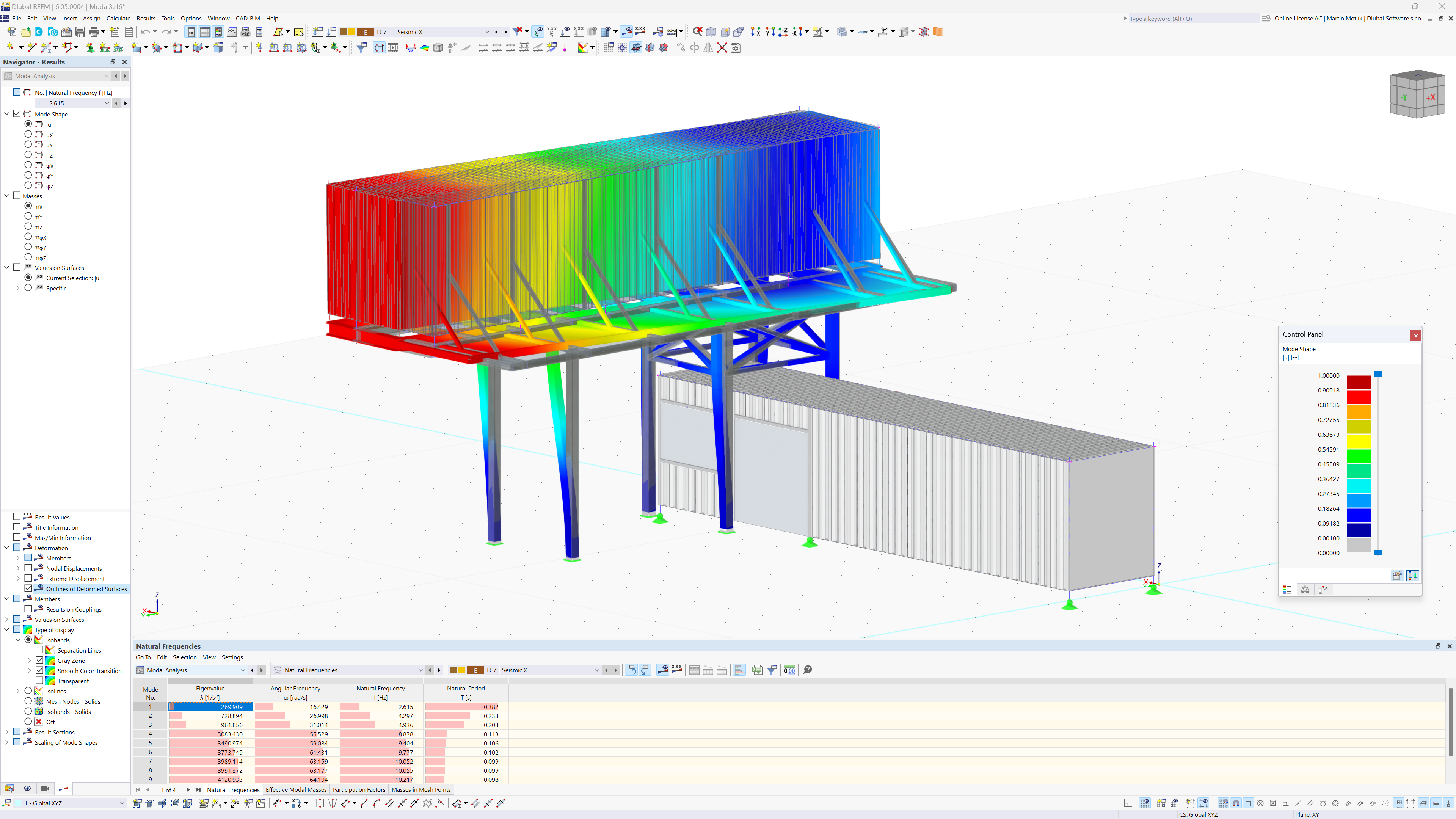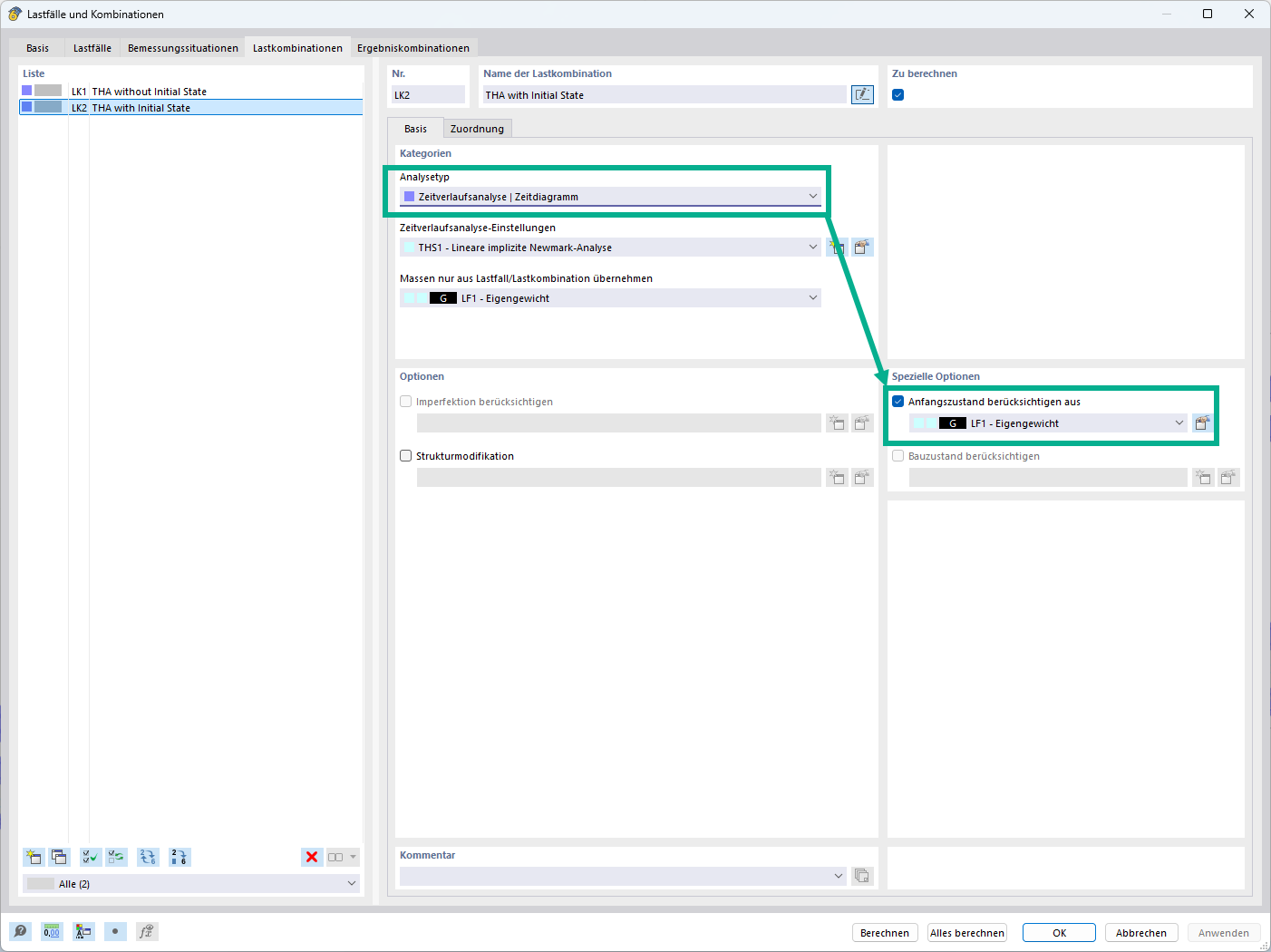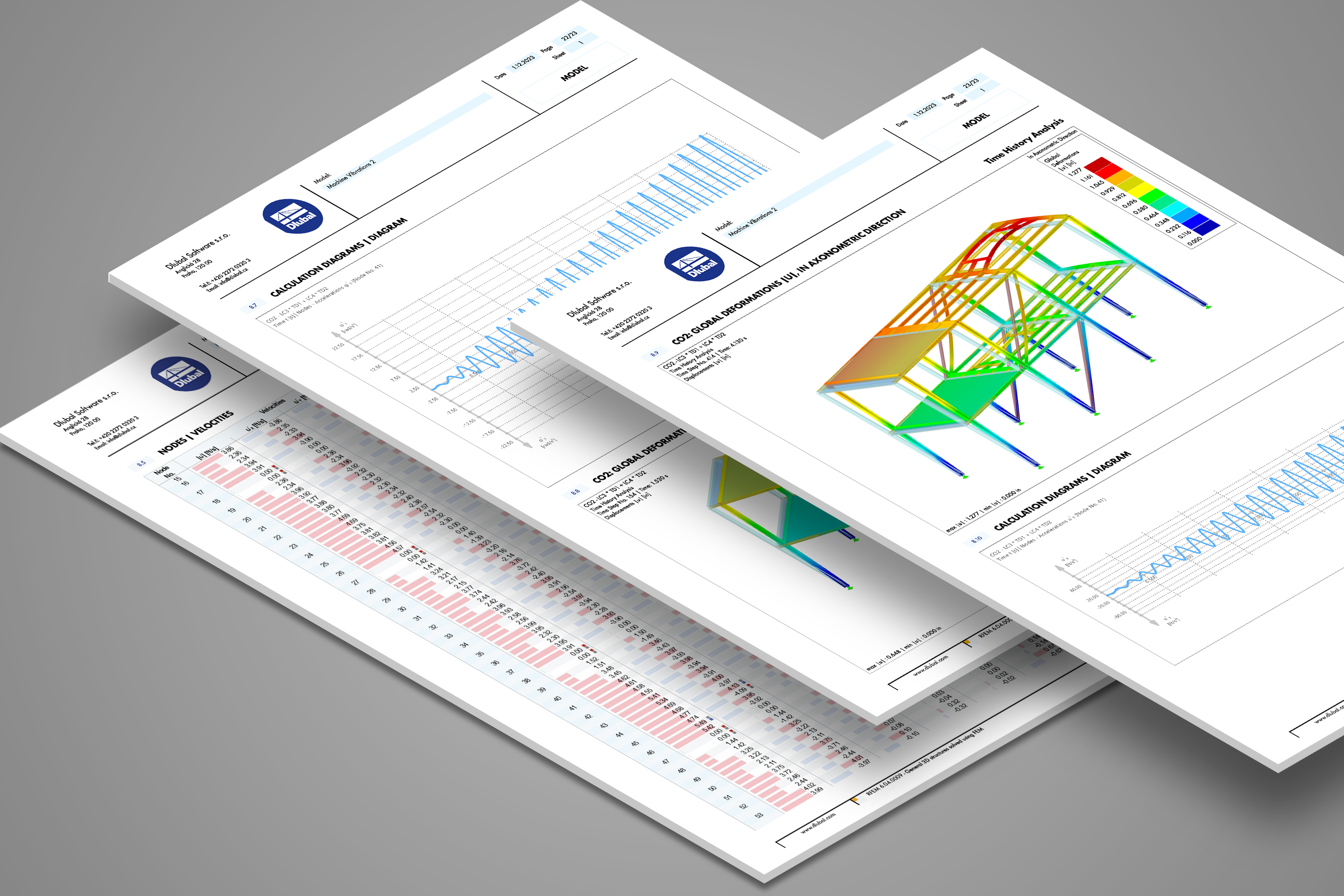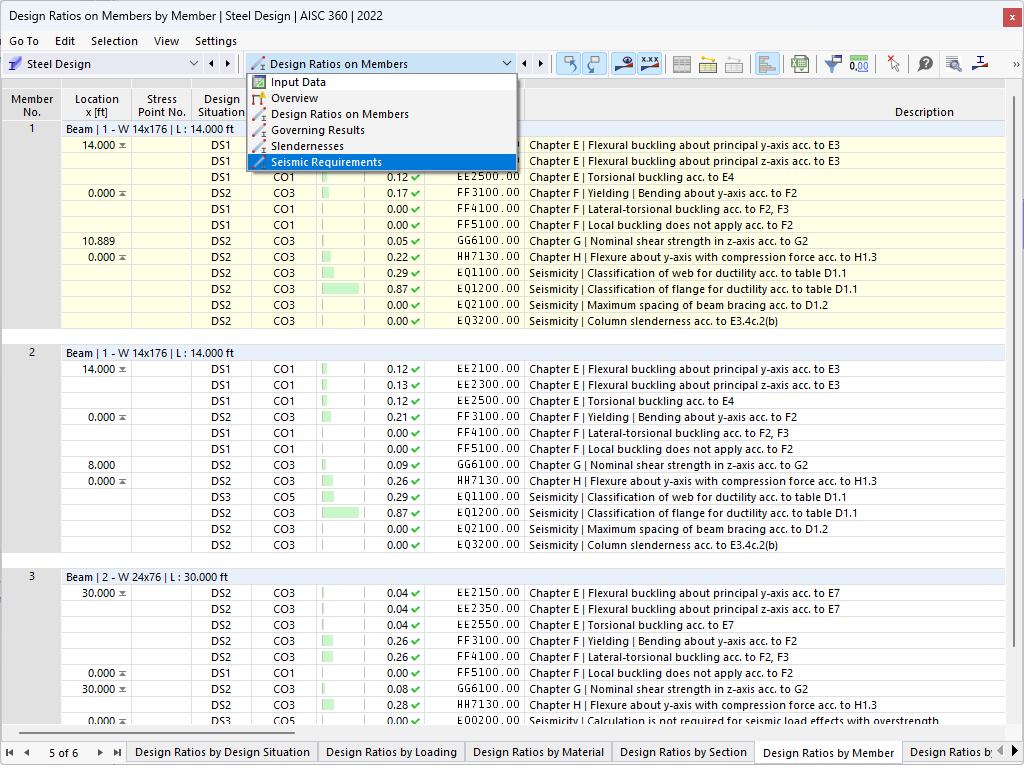对于满足“动力分析程序”条件的结构,在 4.1.8.12 节中定义了两种其他方法 [1],一种是线性动力分析,一种是振型反应谱方法,或者是数值积分线性时程方法,或非线性动力分析。 This article will focus on a Modal Response Spectrum Method (RSA) and the further base shear requirements defined in the NBC 2020.
NBC 2020 Base Shear Variations
Assuming an RSA is calculated according to the NBC 2020, which is beyond the scope of this article, the base shear can be determined at the bottom story of the structure in each of the orthogonal directions the lateral seismic load is applied. A series of steps in Article 4.1.8.12 [1] defines the various base shear variations needed to ultimately scale the story shears, story forces, member forces, and deflection, if necessary.
Step 1
In Sentence (5) [1], the elastic base shear, Ve, should be determined from a linear dynamic analysis, which is the first step in understanding the NBC base shear requirements. Ve should not include any additional factors or scaling applied to the response spectrum.
Step 2
Determine the adjusted elastic base shear, Ved, also known as the "adjusted lateral earthquake elastic force at the base of the structure", according to Sentence (6) [1] using Ve determined from Sentence (5) [1]. For all structures located on sites other than XF and having a seismic force-resisting system (SFRS) with a ductility-related force modification factor, Rd, equal to or greater than 1.5, then Ve should be multiplied by the larger of the following two factors to obtain Ved:
|
S(0.2) |
Design spectral response acceleration for a period of T = 0.2 sec |
|
S(0.5) |
Design spectral response acceleration for a period of T = 0.5 sec |
|
S(Ta) |
Design spectral response acceleration for the fundamental lateral period of vibration of the structure in the direction under consideration |
Step 3
The previously determined Ved should be multiplied by the importance factor, Ie, given in Article 4.1.8.5 [1] and divided by the ductility-related force modification factor multiplied by the overstrength-related force modification factor, RdRo, found in Table 4.1.8.9 [1] to determine the specified lateral earthquake force, Vd.
Step 4
Determine the specified lateral earthquake force, V, given in Article 4.1.8.11 [1] according to the simplified ESFP.
NBC 2020 Base Shear Scaling Requirements
With the information above in collaboration with 4.1.8.12(8) [1], if Vd from Step 3 is less than 80% of V from Step 4, then Vd should be taken as 0.8V for all regular structures and irregular structures permitted to be designed with the Equivalent Static Force Procedure.
For all irregular structures, which require a dynamic analysis specified in 4.1.8.7 [1], as well as wood structures greater than 4 stories, which meet the criteria set forth in 4.1.8.12(12) [1], then Vd shall be taken as the larger of Vd or 100% of V stated in 4.1.8.12(9) [1].
In addition to these minimums, the scale factor Vd/Ve should be applied to elastic story shears, story forces, member forces, and deflections, including the effects of accidental torsion to determine the design values from 4.1.8.12(10) [1].
NBC 2020 Base Shear Application in RFEM 6
With the multiple variations for base shear discussed in NBC 2020, it may be difficult to determine which base shear variant is provided when running a response spectra analysis according to the standard in the structural analysis program RFEM 6.
Utilizing the Response Spectrum Analysis Add-on, there are two spectrum types available under the Response Spectrum definition details, including the "Elastic Spectrum" and the "Design Spectrum".
The "Elastic Spectrum" will provide the structure’s elastic base shear, Ve, from 4.1.8.12(5) [1] or Step 1 above. This value does not include the consideration of Ie/RdRo or any other factors.
The "Design Spectrum" will provide the structure’s design base shear, Vd, from 4.1.8.12(7) [1] or Step 3 above. However, it should be noted that the additional factor specified in 4.1.8.12(6) or Step 2 above is not included in this calculation. The calculation does include Ie/RdRo, as these variables are listed directly under the "Design Spectrum" options, whereas they are not listed for the "Elastic Spectrum".
For either spectrum type, the user will have the ability to scale the response spectrum directly to account for scale factor requirements. For example, the "Elastic Spectrum", which is needed to analyze the structure deflections as it does not include the effects of Ie/RdRo, may need to be scaled by Vd/Ve as required in 4.1.8.12(10). For the "Design Spectrum" type, the Vd/Ve scale factor may also apply in addition to the factor specified in 4.1.8.12(6) or Step 2 above, which is not included in the calculation. The Response Spectrum Analysis Add-on provides a scaling option in each of global directions X, Y, and Z, in which the seismic force can be applied.
It should also be mentioned, the structure's story and base shear is now automatically available in RFEM 6 under the Spectral Analysis table results when the Building Model Add-on is activated. The "Results by story" can be selected in the table dropdown and the "Story Actions" tab will display the story shear for each level.
In summary, the linear dynamic analysis requirements and in particular the modal response spectrum analysis set forth by NBC 2020 are possible to consider utilizing the FEA program RFEM 6 in addition to the Response Spectrum Analysis Add-on. The many base shear variations in Article 4.1.8.12 [1] are possible to obtain utilizing the program with either spectrum type and the the scaling factor options available.
Review the previously recorded webinar "NBC 2020 Response Spectrum Analysis in RFEM 6", available in the links below, for an introduction to a response spectrum analysis according to the NBC 2020 in RFEM 6.












..png?mw=320&hash=bd2e7071b02d74aef6228d22c4b83867d2d7e1a5)




























.png?mw=512&hash=71474bbf484eff50cf2eb4da2f7c0a5d6103a65d)




















-querkraft-hertha-hurnaus.jpg?mw=350&hash=3306957537863c7a7dc17160e2ced5806b35a7fb)












